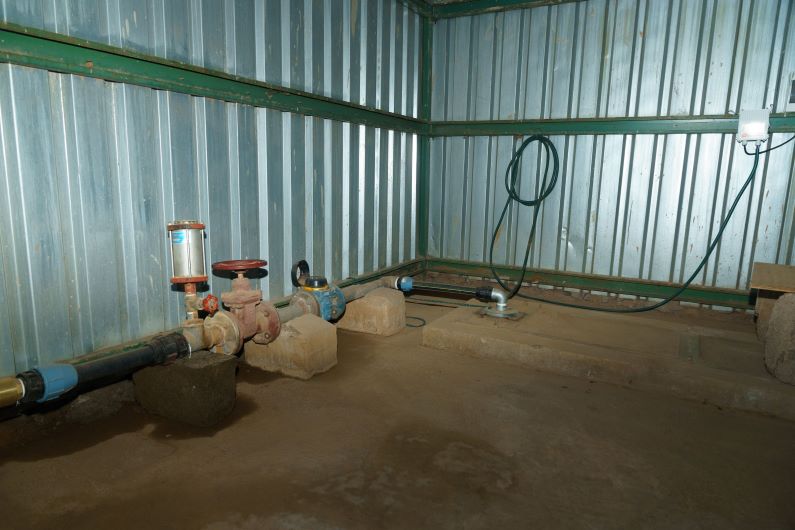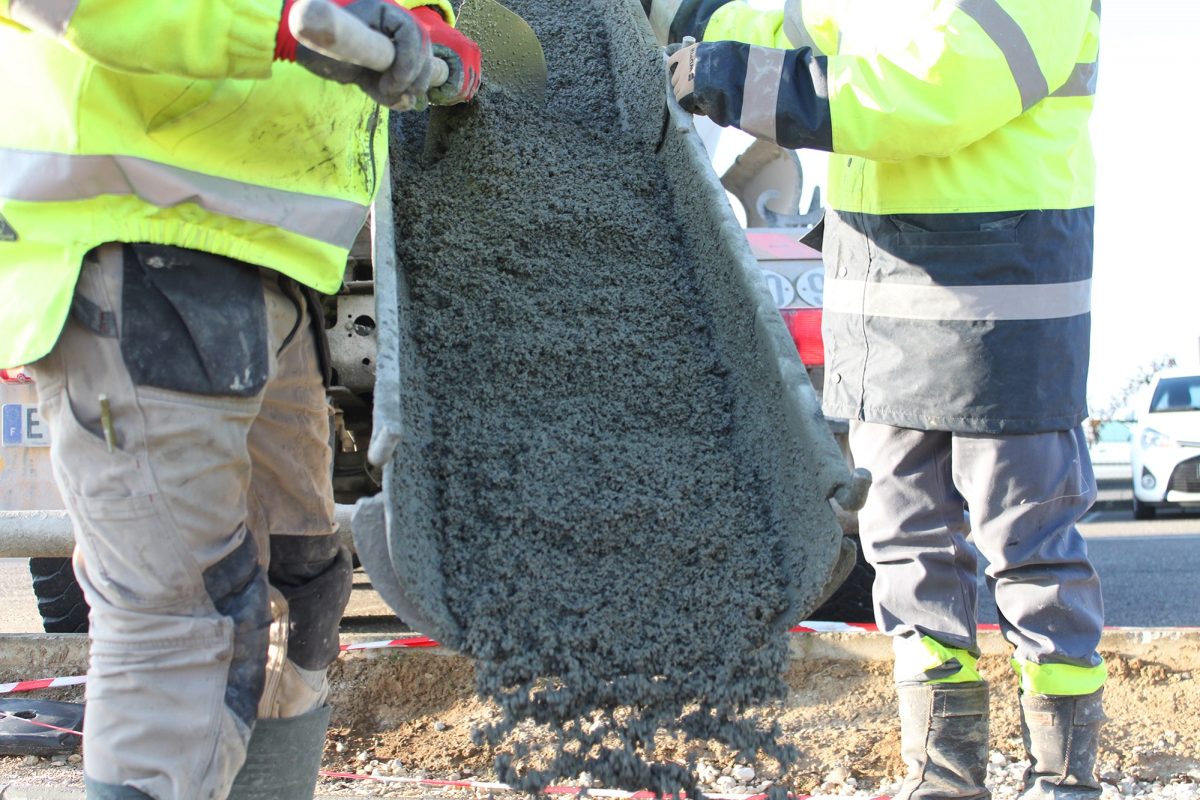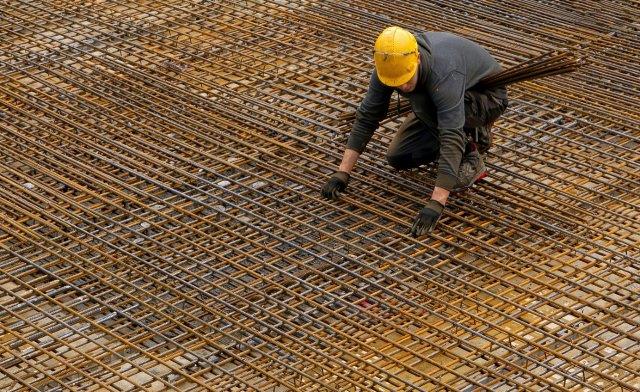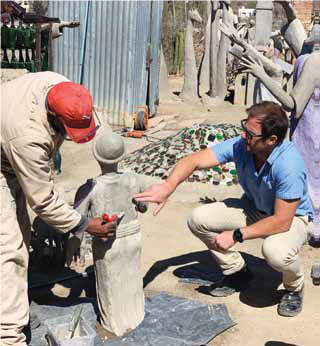
By Daniel van der Merwe, Leaf Architects, for Concrete Trends
When Concrete Trends first published this story, the of the current lock-down hadn’t been imagined by most of us. As approach the need to manage our way back into world, it is apparent that notions of holidays and travel will tend be local, and South Africa has so much to offer. Concrete Trends is combining our focus on construction and concrete and giving our community pointers about exploring South Africa, with a keen interest on what we all love – construction.
Helen Martins was driven by a passion to transform her environment. She sought to worship, dream and convene her message of spirituality and meaning through the symbolism of her unique concrete sculptures supplemented by bottles and glittering surfaces created by embedding crushed glass.
Miss Helen’s imagination transformed humble materials such as cement, glass, mirrors and wire into a secret, magical world that she shared with few, drawing upon Bible stories, the Rubaiyat of Omar Khayyam, the Orient, the work of William Blake – all of which blended to create a personal cosmology of an extraordinary, other-worldly home of concrete and ground glass sculptures.
The legacy left behind includes approximately 469 cementsculptures and other structures in the Camel Yard and in the house, and 44 bas-reliefs in the yard and on the front and
back porches. Her creativity conjures up an array of emotions: from wonder to excitement, curiosity sadness. Visitors are at once awed, inspired, and fascinated by these magical figures. One of the reasons for the powerful impact of her works could level, with the Jungian archetypal expressions of suppressed darker desires as well as with the need for psychic transformation.
The welcome to her world is expressed in the arched entrance presiding over the street entrance – guarded by a double-faced owl, like Janus, the Romangod of portals. Yet this obvious intention is contradicted by the high fence barricade and the stand of cacti, which she then erected as a boundary around her expressions. Woven with wire words it sent out messages to the surrounding world.
Concrete workshops to empower marginalised artists
Most of the Owl House sculptures were created in a collaborativefashion with local illiterate labourers. Their offspring have become a unique community of crafters who are continuing the tradition and selling concrete work Traditionally, these cement artists have used a ‘building up and carving away’ technique to create the artworks that they sell. This is laborious and time consuming. I obtained sponsorships from various companies such as PPC and Chryso to provide materials for a series of workshops, teaching the crafters new techniques, insights into other creative concrete applications and how to improve the quality and durability of their work.
Crafters were given simple found objects such as plastic containers, pieces of cloth and other items to be used as moulds. They were introduced to various alternative mould making techniques and how to mix, cast, de-mould and cure concrete using their own artworks as prototypes and using cheap materials such as bathroom silicone.
New technologies in cement and concrete and unusual inspirational concrete products were showcased and preceded a Creativity and Design Module. The workshops also introduced artists to the various additives and admixtures such as fibres, pigments, superplasticisers, accelerators, and release agents and how to cast their objects. I taught them about accelerators to enable their work to set quickly and to allow faster de-moulding of the artworks.
Chryso and a.b.e Construction Chemicals generously agreed to be part of this project. Michelle Fick, Chryso, a.b.e. Executive Relationship and Project Manager explained: “When Daniel van der Merwe of Leaf Architects and Landscapers recommended Chryso and a.b.e Construction Chemicals to get involved in the restoration of the Owl House, we were thrilled to be part of this project. It is currently rated as one of the top tourist destinations in the Eastern Cape and was declared a National Heritage Site earlier this year.” Dean Botha, the a.b.e. Technical Representative in Port Elizabeth, assisted with training staff, demonstrations and product recommendation. “We were also very happy to sponsor the initial batch of products which included dura.®rep ZR Primer – anti-corrosive primer for exposed rebar; epidermix 344 – structural wet/dry epoxy adhesive for bonding ‘fresh’ to old concrete; dura.®rep FR – fibre reinforced structural repair mortar for concrete reinstatement; epidermix 318 – epoxy mortar and abe®silocoat – cementitious based waterproofing slurry,” concluded Fick.
The Owl House, once an object of suspicion, derision and embarrassment to the community, has become the life force and single most important tourist destination to the town of Nieu Bethesda. It has been rated as one of the top twenty ‘must see’ attractions in South Africa.
<!– /* Font Definitions */ @font-face {font-family:”Cambria Math”; panose-1:2 4 5 3 5 4 6 3 2 4; mso-font-charset:0; mso-generic-font-family:roman; mso-font-pitch:variable; mso-font-signature:-536869121 1107305727 33554432 0 415 0;} @font-face {font-family:Calibri; panose-1:2 15 5 2 2 2 4 3 2 4; mso-font-charset:0; mso-generic-font-family:swiss; mso-font-pitch:variable; mso-font-signature:-469750017 -1073732485 9 0 511 0;} /* Style Definitions */ p.MsoNormal, li.MsoNormal, div.MsoNormal {mso-style-unhide:no; mso-style-qformat:yes; mso-style-parent:””; margin-top:0cm; margin-right:0cm; margin-bottom:8.0pt; margin-left:0cm; line-height:107%; mso-pagination:widow-orphan; font-size:11.0pt; font-family:”Calibri”,sans-serif; mso-ascii-font-family:Calibri; mso-ascii-theme-font:minor-latin; mso-fareast-font-family:Calibri; mso-fareast-theme-font:minor-latin; mso-hansi-font-family:Calibri; mso-hansi-theme-font:minor-latin; mso-bidi-font-family:”Times New Roman”; mso-bidi-theme-font:minor-bidi; mso-fareast-language:EN-US;} .MsoChpDefault {mso-style-type:export-only; mso-default-props:yes; font-family:”Calibri”,sans-serif; mso-ascii-font-family:Calibri; mso-ascii-theme-font:minor-latin; mso-fareast-font-family:Calibri; mso-fareast-theme-font:minor-latin; mso-hansi-font-family:Calibri; mso-hansi-theme-font:minor-latin; mso-bidi-font-family:”Times New Roman”; mso-bidi-theme-font:minor-bidi; mso-fareast-language:EN-US;} .MsoPapDefault {mso-style-type:export-only; margin-bottom:8.0pt; line-height:107%;} @page WordSection1 {size:612.0pt 792.0pt; margin:72.0pt 72.0pt 72.0pt 72.0pt; mso-header-margin:36.0pt; mso-footer-margin:36.0pt; mso-paper-source:0;} div.WordSection1 {page:WordSection1;} –>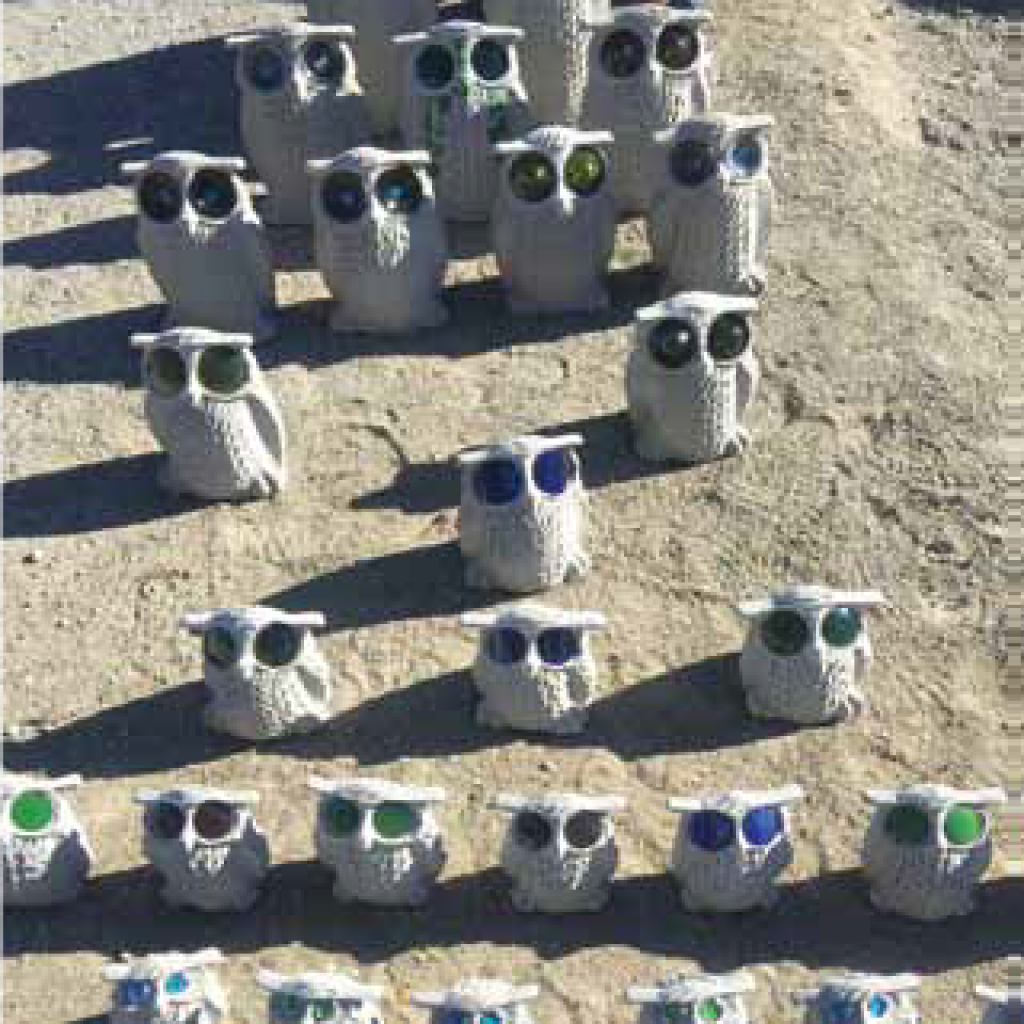
Crafters’ wares outside the museum. A master plan was approved and is far advanced to create more permanent structures for shelter, storage and art work production.
After many years of delays, the Owl House was formally declared a site of cultural and heritage importance in June 2019 by SAHRA (SA Heritage Resource Agency). This formally accords it a special preservation and national heritage status. Readers of Concrete Trends are invited to join the effort in realising the aims and objectives of the Owl House Foundation, and to contribute to the wellbeing of the Owl House and its community by becoming members of the Foundation. Details can be found at www.theowlhouse
<!– /* Font Definitions */ @font-face {font-family:”Cambria Math”; panose-1:2 4 5 3 5 4 6 3 2 4; mso-font-charset:0; mso-generic-font-family:roman; mso-font-pitch:variable; mso-font-signature:-536869121 1107305727 33554432 0 415 0;} @font-face {font-family:Calibri; panose-1:2 15 5 2 2 2 4 3 2 4; mso-font-charset:0; mso-generic-font-family:swiss; mso-font-pitch:variable; mso-font-signature:-469750017 -1073732485 9 0 511 0;} /* Style Definitions */ p.MsoNormal, li.MsoNormal, div.MsoNormal {mso-style-unhide:no; mso-style-qformat:yes; mso-style-parent:””; margin-top:0cm; margin-right:0cm; margin-bottom:8.0pt; margin-left:0cm; line-height:107%; mso-pagination:widow-orphan; font-size:11.0pt; font-family:”Calibri”,sans-serif; mso-ascii-font-family:Calibri; mso-ascii-theme-font:minor-latin; mso-fareast-font-family:Calibri; mso-fareast-theme-font:minor-latin; mso-hansi-font-family:Calibri; mso-hansi-theme-font:minor-latin; mso-bidi-font-family:”Times New Roman”; mso-bidi-theme-font:minor-bidi; mso-fareast-language:EN-US;} .MsoChpDefault {mso-style-type:export-only; mso-default-props:yes; font-family:”Calibri”,sans-serif; mso-ascii-font-family:Calibri; mso-ascii-theme-font:minor-latin; mso-fareast-font-family:Calibri; mso-fareast-theme-font:minor-latin; mso-hansi-font-family:Calibri; mso-hansi-theme-font:minor-latin; mso-bidi-font-family:”Times New Roman”; mso-bidi-theme-font:minor-bidi; mso-fareast-language:EN-US;} .MsoPapDefault {mso-style-type:export-only; margin-bottom:8.0pt; line-height:107%;} @page WordSection1 {size:595.3pt 841.9pt; margin:72.0pt 72.0pt 72.0pt 72.0pt; mso-header-margin:35.4pt; mso-footer-margin:35.4pt; mso-paper-source:0;} div.WordSection1 {page:WordSection1;} –>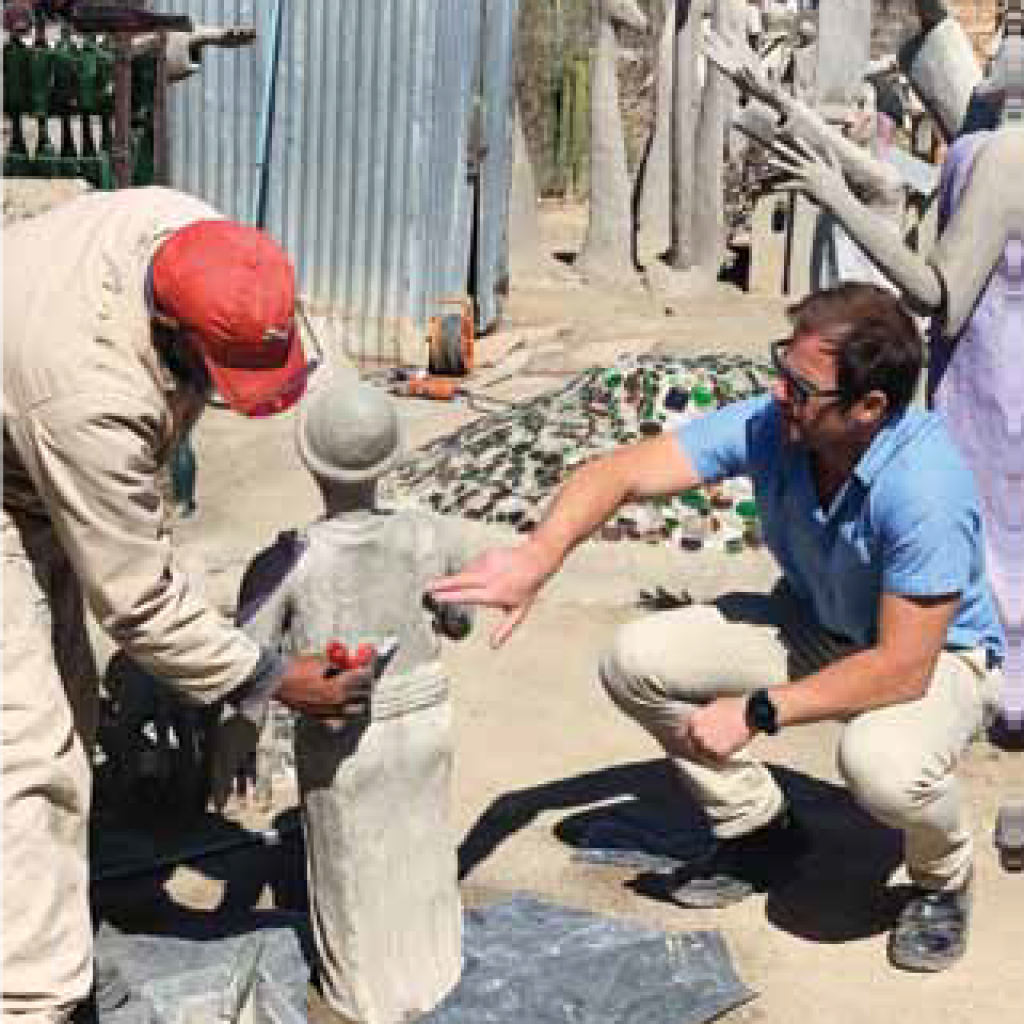
Renovation work to sculptures was made possible by using advanced concrete rehabilitation products generously supplied by Chryso and a.b.e.

